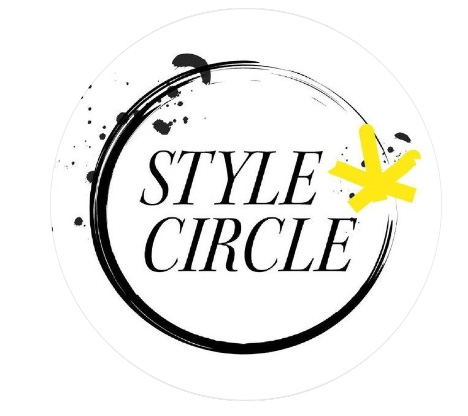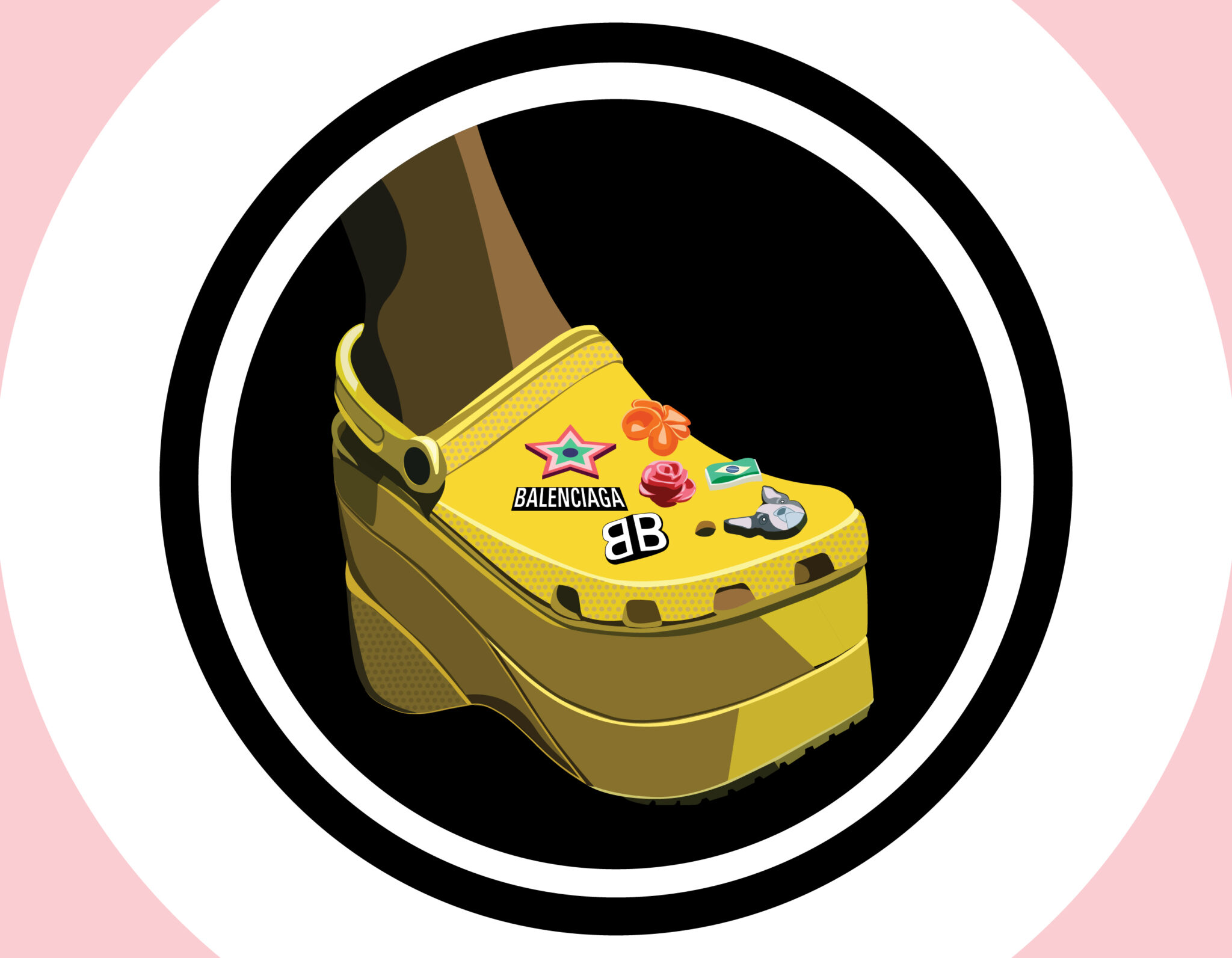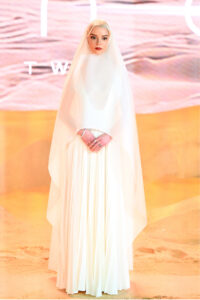GRAPHIC DESIGN Sarah Pasquini
In 2006, Vincenzo Ravina created the blog, IHateCrocs.com which geared international attention from the New York Times to The Globe and Mail as a platform “dedicated to the destruction of crocs and those who think their excuses for wearing them are viable.” This blog featured videos of contributors destroying the shoe using explosives and weapons that express their hatred for the “violently distasteful” footwear. No fashion item has been so polarizing than these colourful plastic clogs with their Swiss-cheese holes gaining popularity for comfort and practicality, but also heavy criticism for its unflattering appeal. They’re what Jason Gay of the Wall Street Journal calls it, “cargo shorts for the feet.” Previously, it seemed impossible that Crocs would escape their unfashionable aura that Birkenstocks and Uggs were able to get out of. However more than a decade since the blog, Crocs has resurged their popularity and gained cult status to be embraced in the fashion community within the past few years. It has become a rebellious fashion statement that proposes an antithesis to the idea of mainstream taste to a new generation.

Crocs are nothing more than what it’s originally intended: to be comfortable. The footwear was developed in 2002 based on the waterproof, lightweight resin material, Croslite, “an odour-resistant, form-fitting alternative to rubber.” Features such as the non-slip soles and breathable perforated holes are the main selling factors in making comfort a principle. Designed with the likes of “the mom, the beach-goer, and the gardener” in mind, Crocs made the concept of practicality from its price point to versatile use to become the basis of the brand’s appeal to the everyday market. The brand has since expanded to various styles of footwear ranging from heels to sneakers infusing the Croslite material into their designs.
Crocs, in a way, represent the idea of kitschiness and humour that relies on forms of nostalgia and irony.
Crocs in a way represent the idea of kitschiness and humour that relies on forms of nostalgia and irony. Crocs have become a meme, seen in ironic takes that can be reminiscent of suburban malls and reflections of poor style choices. The shoe contains a counter-cultural narrative that reflects authentic expression as a personal endeavour rather than basing on standardized notions of fashion or beauty. Crocs have been aligned with the rise of the “fashion hipster” during the 2010s coined by Eugene Rabkin that describes a new generation of consumers whose core values are based on “irony, camp, and insider humour.” There is a form of escapism and rejection towards conventional culture of aesthetics within this demographic while looking into alternative modes of expression. Crocs’ instantaneous and almost jarring appeal engages quickly in popular forms of new media that feed off of provocation of high-arousal emotions. With the rise of social media and meme culture, Crocs created an alternate standard of aesthetics like an inside joke that those only with specific cultural knowledge can understand. Suddenly, it became cool to be uncool.
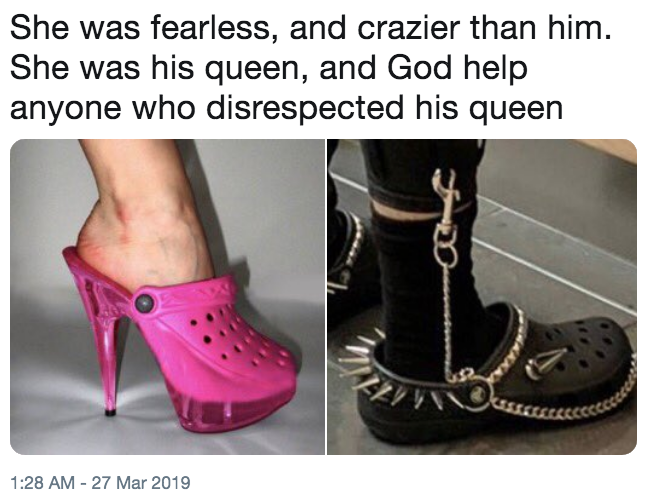
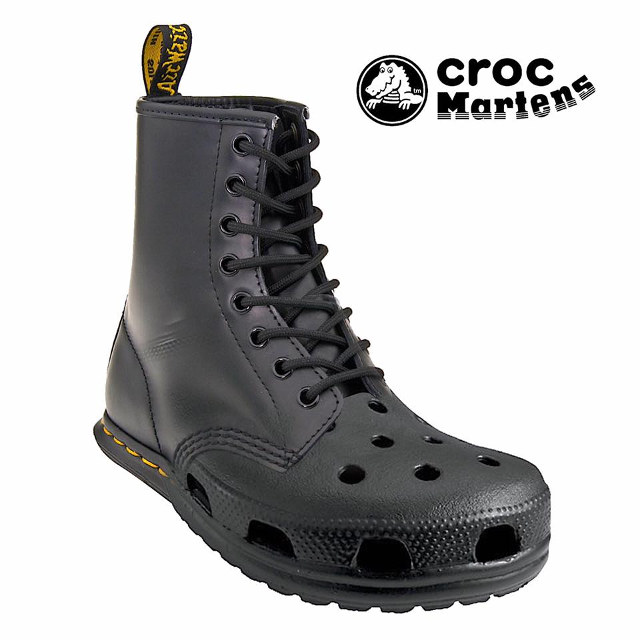
Designer collaborations within the past few years have cemented a niche for this footwear to become a coveted novelty with its paradoxical themes of cultural relevance, accessible practicality and luxury branding. During their spring/summer 2018 collection, Balenciaga collaborated with the footwear brand to create a platform clog which was featured at the Met Costume Institute in their 2019 exhibition, Camp: Notes on Fashion. Retailed at $850, these are one of many designer collaborations along with Christopher Kane, that have placed Crocs at the intersection of high and popular culture. BEAMS, the Japanese brand, has taken the ironic approach to the extreme in creating kitschy crocs with unexpected accessories such as clip-on visors, fanny packs, and fringe. Brands like Jibbitz have sparked in popularity to younger audiences with personalized decorative charms. These brands developed a meta sense of awareness within the cultural landscape associated with the footwear and utilize their reputation to speak to the “fashion hipster’s” ethos towards fashion.
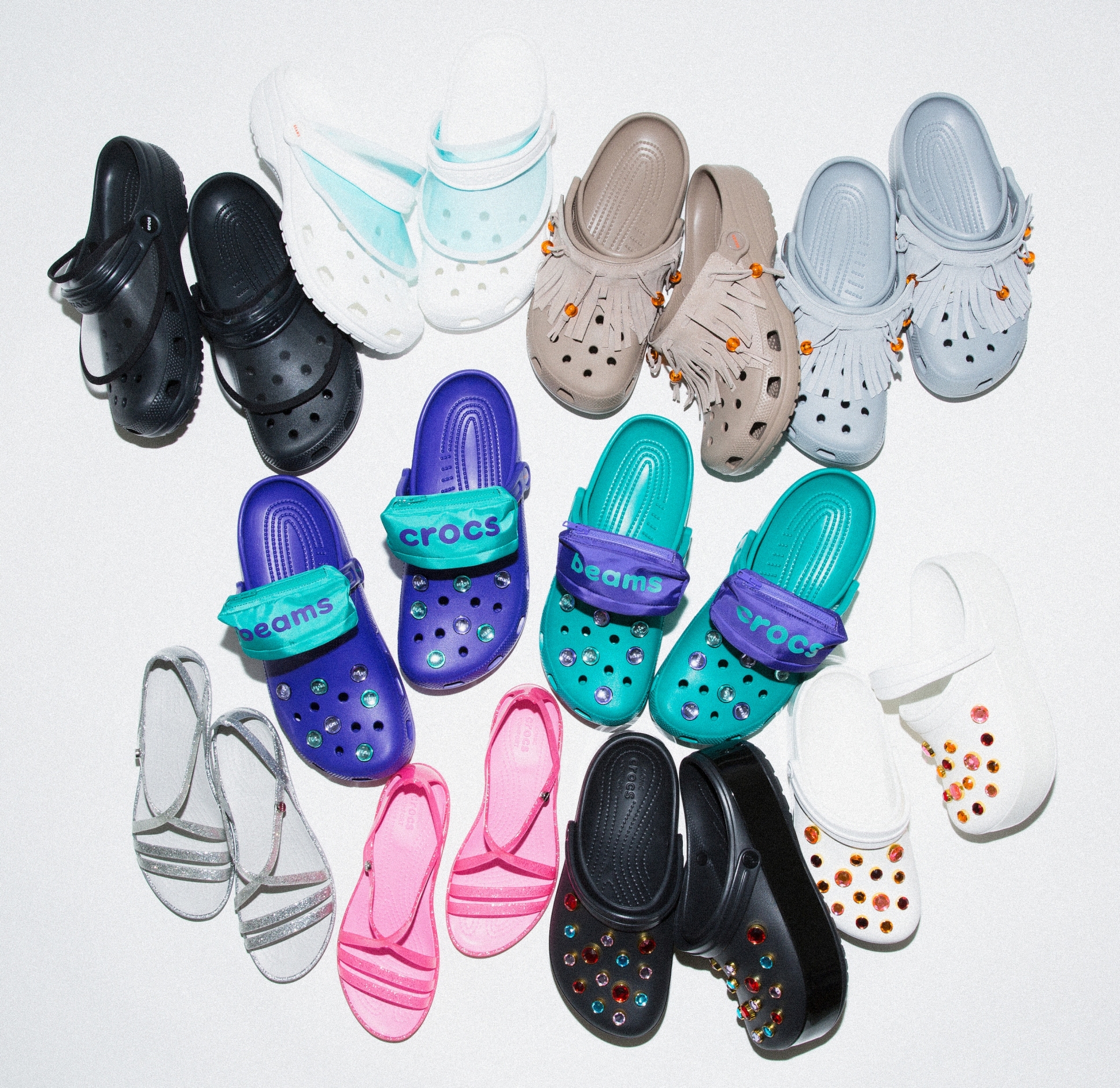
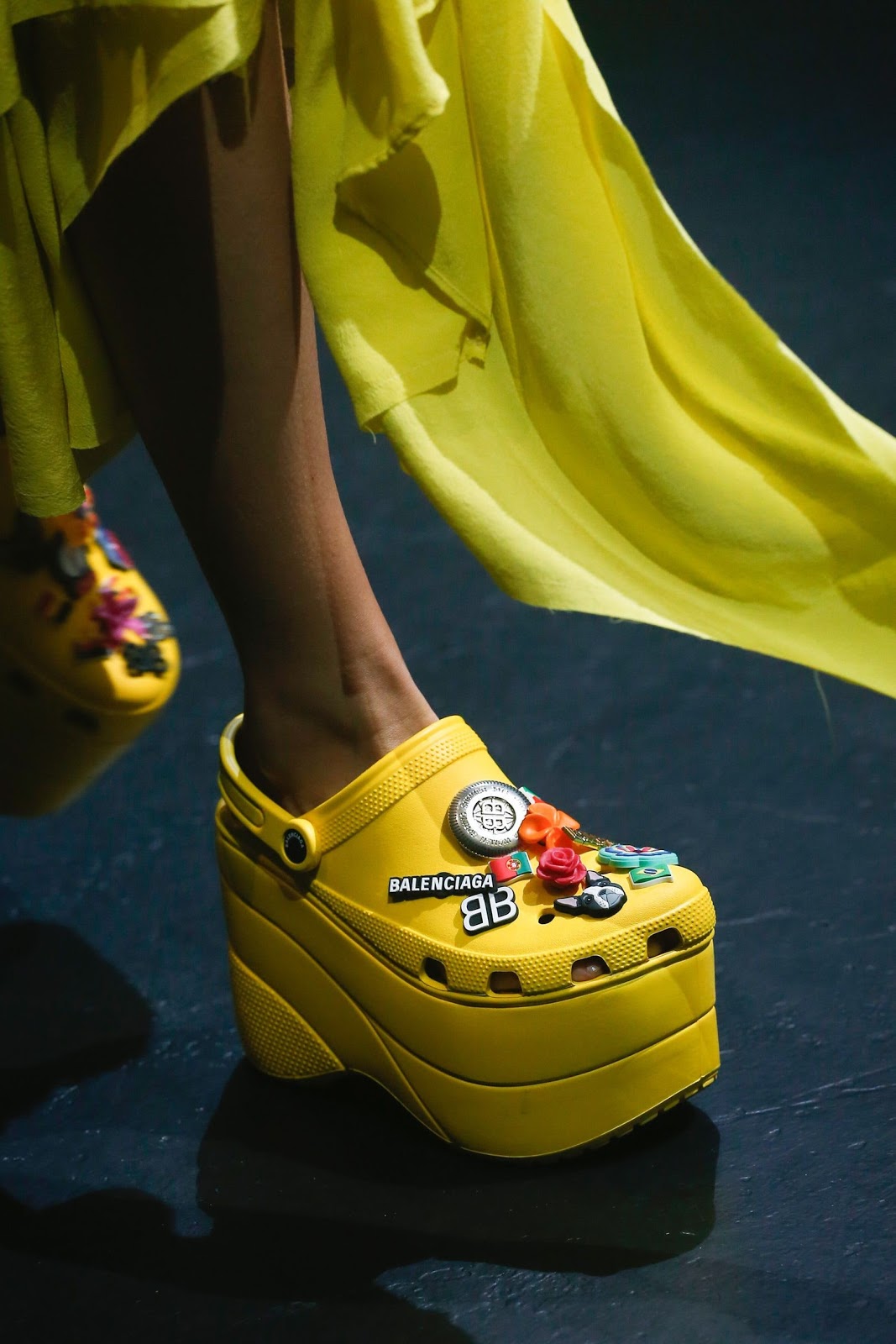
Instantly recognizable, Crocs refuses to conform to mainstream sensibilities and have embraced their culturally subjective ugliness as a core element to their success.
Crocs can communicate visual codes of convenience, or in some cases, bad taste. Now at a time where sweatpants under dress shirts have become a commonplace, comfort has overtaken the conversation in today’s fashion choices; Crocs are no exception. Despite the surrounding stigma, it’s now become a statement for the unfashionable and the fashionable alike. Instantly recognizable, Crocs refuses to conform to mainstream sensibilities and have embraced their culturally subjective ugliness as a core element to their success. This brings light to the everyday consumer that prioritizes practicality, functionality, and accessibility as modes of beauty. It’s unavoidable that its comfort outweighs their aesthetic value, and now it’s time to celebrate their ubiquitous nature. We love to hate them, but we also hate to love them.
